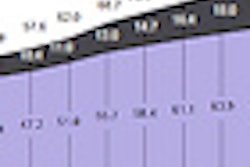Although a study in the June 13 issue of the Journal of the American Medical Association reported substantial increases in advanced diagnostic imaging utilization over a 15-year time frame, several imaging organizations have issued statements that emphasize the study's data showing a recent decline in imaging use.
The JAMA paper, authored by Dr. Rebecca Smith-Bindman of the University of California, San Francisco and colleagues, found growth in imaging utilization between 1996 and 2010 at the group of six HMOs studied.
The American College of Radiology (ACR) believes the study, although promising, is incomplete. While the study underscores that medical imaging's growth rate has slowed in the past several years, it also includes information on the current use of scans and their beneficial effects that may be incomplete, incorrect, or easily misunderstood, according to a statement from the organization.
The JAMA article shows that imaging use increased in settings where there was no financial incentive to perform imaging, which demonstrates that imaging use is driven by a desire for better patient care, ACR said. Appropriate growth in imaging is a good thing; the focus should be on educating providers on more appropriate use, said Dr. Paul Ellenbogen, chair of the ACR Board of Chancellors.
While the JAMA study reported that many patients in the health systems studied received higher doses of radiation, these were likely cancer patients or others with chronic conditions who required multiple scans to gauge treatment progress and for whom the benefit of having the exams outweighed any long-term risk, according to ACR.
Meanwhile, the Access to Medical Imaging Coalition (AMIC) said the JAMA study affirms there was a decline in medical imaging utilization in recent years among both Medicare and privately insured individuals.
The coalition said in a statement that it supports mandatory accreditation for imaging facilities and the widespread adoption of physician-developed appropriateness criteria. When used in combination with clinical decision-support software to assist physicians in determining when to perform medical imaging and which modality to use, appropriateness criteria have proved effective in reducing unnecessary tests, AMIC said.
Finally, the Medical Imaging and Technology Alliance (MITA) said that the study data -- in suggesting that the growth rate of advanced imaging modalities is now declining -- further debunk "the myth that life-saving diagnostic imaging services are growing and contributing to rising healthcare costs."
Medical imaging is integral to established medical guidelines and best practices; it reduces hospital stays and helps patients return to their families, lives, and work more quickly, MITA said. Nonetheless, the study authors rightly note that it's essential that all patients and their physicians weigh the relative risks and benefits when considering any procedure, the group noted.





















